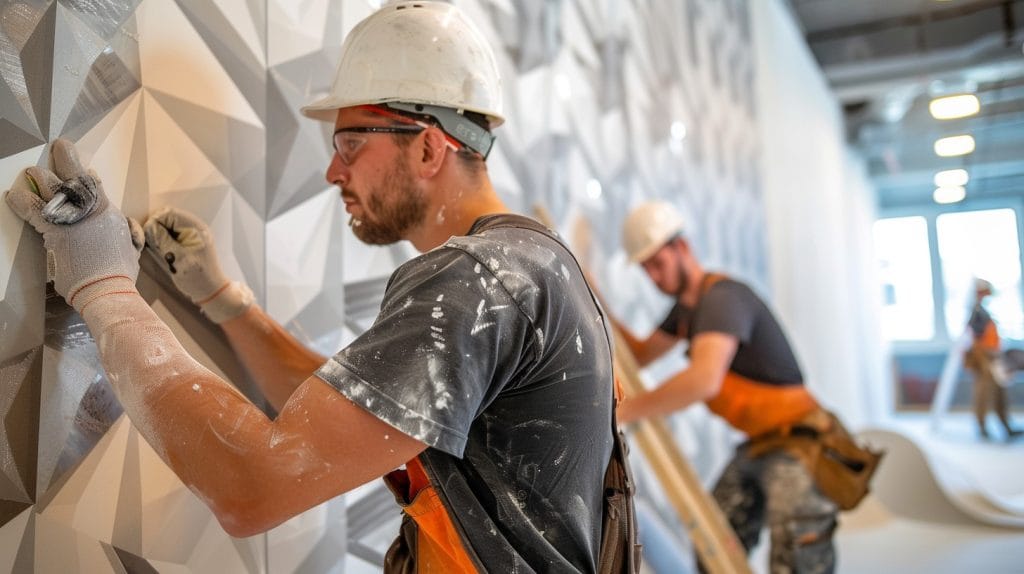Waterproof Adhesives: Features and Applications
Waterproof adhesives are among the most important and widely used types of adhesives across various industries. They play a crucial role in bonding and repairing surfaces exposed to water and moisture. Due to their high resistance to water, these adhesives are utilized in various applications, including construction, automotive, marine industries, and even household uses. This article examines the characteristics, applications, and methods of using waterproof adhesives in humid environments, analyzing their strengths and weaknesses.

1. Importance of Waterproof Adhesives:
Waterproof adhesives are defined as those that maintain their strength and functionality in the presence of moisture, water, and even submerged conditions. These adhesives are made from specific chemical substances and polymer compounds that can withstand deterioration caused by water and humidity. The importance of using these adhesives in humid environments and applications that require high durability under harsh weather conditions is significant.
2. Characteristics of Waterproof Adhesives:
- Resistance to Moisture and Water:
The most significant feature of waterproof adhesives is their resistance to water and moisture. These adhesives can function effectively in direct contact with water without losing their bonding properties, making them ideal for use in humid environments and places that require high strength. - Chemical Resistance:
Waterproof adhesives are often resistant to various chemicals. This characteristic ensures their effectiveness in conditions where, besides water, chemical agents such as detergents, oils, and solvents are present. - High Flexibility:
Many waterproof adhesives possess high flexibility, allowing them to resist temperature fluctuations and mechanical stresses. This feature is particularly important in industrial and construction applications that must endure varying pressures and harsh environmental conditions. - Strong Adhesion to Various Surfaces:
Waterproof adhesives are designed to bond to a variety of surfaces, including metals, plastics, glass, stone, wood, and fabric. This versatility makes them suitable for diverse applications. - Resistance to Temperature Changes:
These adhesives are manufactured to maintain their performance across various temperature conditions, from cold and freezing to extreme heat. This feature is crucial for outdoor environments and construction applications.
3. Types of Waterproof Adhesives:
- Silicone Adhesives:
Silicone adhesives are among the most popular waterproof adhesives due to their high flexibility and water resistance. They are widely used in construction, plumbing, and household repairs, often for sealing joints and connections in moist environments. - Polyurethane Adhesives:
Known for their high resistance to water and harsh environmental conditions, polyurethane adhesives are used in various industries, including automotive, construction, and marine sectors. They offer strong adhesion to different surfaces and resistance to mechanical shocks. - Epoxy Adhesives:
Waterproof epoxy adhesives are utilized in industrial applications and specialized repairs due to their high bonding strength and resistance to water and chemicals. They are typically used to bond metals, plastics, and composites. - Tar-based Adhesives:
Tar-based adhesives are a type of waterproof adhesive primarily used in construction applications such as roof sealing, water foundations, and sewage channels. Their high sealing capabilities and resistance to weather conditions make them suitable for external environments. - Waterproof Acrylic Adhesives:
These adhesives are used in construction and double-glazed glass production due to their clarity, good bonding strength, and moisture resistance. Waterproof acrylic adhesives are ideal for applications requiring aesthetics and transparency.
4. Applications of Waterproof Adhesives:
- Construction Industry:
Waterproof adhesives are employed in construction for sealing joints, window connections, tile and ceramic installations, and roof repairs. They help reduce water intrusion into buildings and increase the longevity of structures. - Automotive Industry:
In the automotive industry, waterproof adhesives are used to seal parts, prevent moisture ingress into the cabin, and protect electrical components. These adhesives also assist in bonding various car parts and preventing corrosion of metal components.

- Marine Industry:
Waterproof adhesives are crucial in the marine and shipbuilding industries for bonding and sealing different components. Due to their high resistance to saltwater and tough marine conditions, they play an important role in enhancing the safety and durability of boats and ships. - Plumbing and Installations:
Waterproof adhesives are used in plumbing and installation systems to seal connections and prevent water leaks. They are particularly beneficial in installing and repairing water, sewage, and heating pipes. - Household Uses:
In homes, waterproof adhesives are used for minor repairs, such as sealing sink seams, bathtubs, and tiles. These adhesives are easy to use and can help improve the appearance and functionality of wet areas.
5. How to Use Waterproof Adhesives in Humid Environments:
- Surface Preparation:
For the best results, surfaces to be glued must be clean, dry, and free from dust. Using alcohol or appropriate cleaners can help remove contaminants and enhance adhesion. - Choosing the Right Adhesive Type:
Selecting the appropriate type of adhesive based on surface type and environmental conditions is crucial. For instance, silicone adhesives are better for surfaces that require flexibility, while epoxy adhesives are more suitable for metal surfaces. - Using Proper Equipment:
In some cases, utilizing specific applicators or adhesive injection devices can help ensure better and more precise adhesive application. These tools can apply the adhesive evenly without creating air bubbles on the surface. - Considering Drying Time:
Each type of waterproof adhesive has its specific drying time that must be adhered to. During this period, the glued surface should not be subjected to pressure or exposed to water and humidity until the adhesive fully cures. - Applying Adequate Pressure:
After applying the adhesive, applying adequate pressure on the components can help improve adhesion. Using clamps or appropriate weights at this stage can enhance the final quality of the bond.

Conclusion
Waterproof adhesives have become essential tools in various industries due to their unique features, including resistance to water, moisture, and harsh environmental conditions. With a wide variety of types and applications, ranging from household repairs to industrial and marine uses, they have met different needs. Proper use and selection of the right type of adhesive can improve performance, durability, and quality of bonds in humid environments, preventing damage caused by water intrusion. By better understanding the characteristics and applications of waterproof adhesives, they can be used more effectively in various projects, yielding better results.

